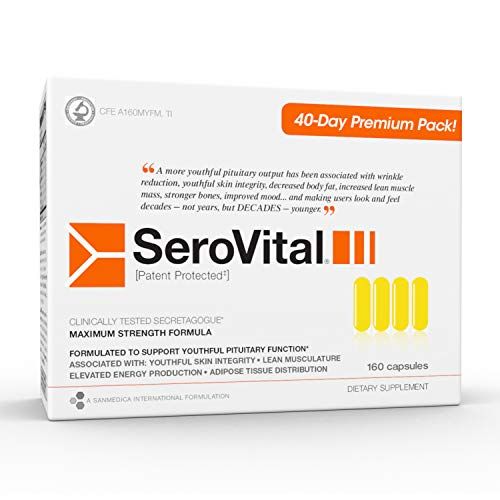Several months ago, I attended an intimate dinner party at a marble-lobbied building on Manhattan’s Upper East Side. The other guests were Wall Street bankers, U.N. diplomats, venture capitalists, and book authors, and the chef-prepared dinner of roast chicken and vegetables was passed by a uniformed server. Midway through the main course, the 40-something blonde seated next to me leaned over and, lowering her voice, confided that she was planning a trip to Los Angeles. Her mission? To get her hands on some human growth hormone (HGH). “I need to lose weight,” she whispered. “Last year, I lost 30 pounds on it.”
Growth hormone therapy isn’t new. Legal, FDA-approved synthetic-HGH drugs have been used to treat hormone deficiency in children and adults and muscle wasting in HIV-positive patients since the 1980s. But in recent years, the explosion of anti-aging clinics in this country—not to mention our culture’s obsession with looking preternaturally young—has given rise to an army of women in search of the ultimate fountain-of-youth treatment: a series of off-label HGH injections that can reportedly erase years from your face and inches from your body. There is, however, one major problem with high society’s newest quick fix. “It’s illegal to use it for anti-aging purposes in the U.S.,” says Rocio Salas-Whalen, M.D., an endocrinologist and founder of New York Endocrinology.
The therapy, which can cost upwards of $1,000 a month, works by returning levels of human growth hormone, which is produced in the pituitary gland, to what they were when we were younger. As we enter middle age, the pituitary produces less and less of it, making it harder to hold on to muscle mass and easier to pile on the pounds. When it’s injected, synthetic HGH can help reverse those changes.
But the list of possible side effects is long—and scary. Patients can suffer from excessive water retention and joint issues, as well as enlarged foreheads and hands (yikes!). There are also concerns that it may raise the risk of cancer. “Growth hormone stimulates all the cells in your body. You have to think, ‘Maybe I don’t want to promote the growth of cancer cells,’” cautions osteopathic physician Richard Firshein, D.O., founder of the Firshein Center for Integrative Medicine on New York’s Park Avenue. Paul Jarrod Frank, M.D., a cosmetic dermatologist in New York, says he has heard of patients who have tried HGH for anti-aging purposes. “When the medication is stopped, the body makes even less of the natural hormone, which can potentially make the patient worse off than when they started,” he warns. Case in point: the woman from the dinner party who told me she had lost 30 pounds the previous year on HGH therapy and a raw food diet, only to see the weight come back the moment she stopped using it.
“When HGH is taken for elective reasons, it can certainly backfire,” agrees osteopathic physician Habib Sadeghi, D.O., founder of Be Hive of Healing Integrative Medical Center in Agoura Hills, California, which caters to the entertainment industry. Sadeghi says he once had a female patient on HGH who ran out of her supply of injections when she got stuck overseas. “She began to experience significant deterioration, including severe body aches and terrible joint pain among other issues,” he says.
Still, many people refuse to heed doctors’ warnings. A quick Google search yields dodgy clinics in Costa Rica and Mexico, where the drugs are apparently more readily and inexpensively dispensed. And if I’m to believe my dinner-party tablemate, there are upscale practitioners in L.A. who will also dole it out (though, for obvious reasons, my friend seemed loath to share her source). Internist Erika Schwartz, M.D., founder of Evolved Science, a concierge medical practice on New York’s Fifth Avenue, says one of her patients was able to get her hands on Saizen, a synthetic-HGH medicine, in Europe. “Wealthy people are taking it, unequivocally,” Schwartz says.
The good news? There’s a newer crop of anti-aging drugs that some docs claim are safer and deliver many of the same benefits as HGH. These injectable synthetic peptides, including tesamorelin and ipamorelin, increase your body’s natural production of growth hormone (rather than flooding the system with synthetic forms of the stuff) and are slightly more affordable. Josh Trutt, M.D., and Erica Walters, M.D., the husband-and-wife team behind Tribeca Wellness Collective, a concierge medical practice in New York, say they’ve been using them on patients for the past two years with compelling results. “With injectable peptides, I’ve seen significant changes in body composition in as few as three weeks,” says Trutt, noting that patients in his practice also committed to exercising at least three times a week. Heather Wyse, a Manhattan real estate sales director, says that when Trutt put her on one of the peptides, she immediately felt more energized.
“I started walking 38 blocks to work every day,” she says. Soon Wyse was able to zip up a Marc Jacobs dress that had languished in her closet for months. She also noticed beauty benefits: “My hair filled in, and my skin was more radiant.”
But what if you don’t have a couple of thousand to plunk down on temporarily whittling your waistline? “There are other ways to get the body to produce more growth hormone naturally,” says Firshein. Strength training, high-intensity interval training, and even laughing have been shown to boost growth hormone levels, as have the supplements L-glutamine and L-arginine, he says. (L-glutamine and L-arginine are star players in SeroVital, a popular supplement that claims to increase HGH.)
Walters, however, emphasizes that HGH isn’t the only hormone women should focus on if they want to feel and look their best. Testosterone, estrogen, and progesterone also need to be in balance. “HGH is just one helpful piece of a larger puzzle,” she says. “It’s a very delicate dance.”














